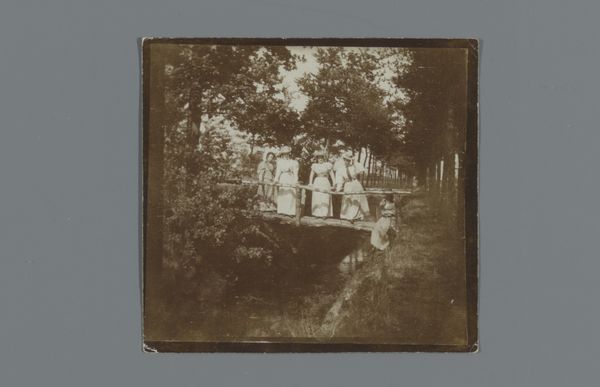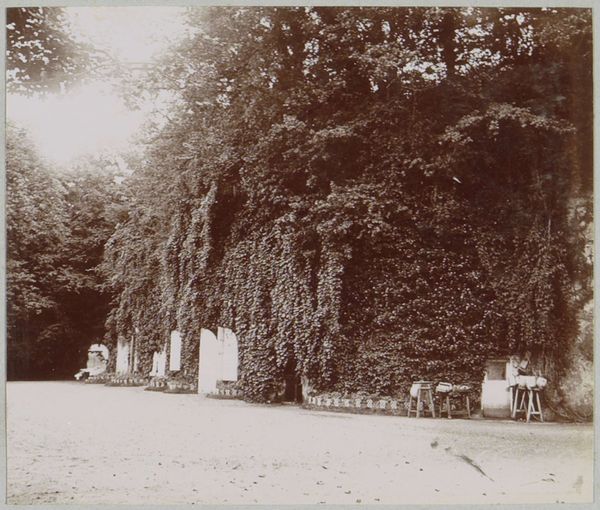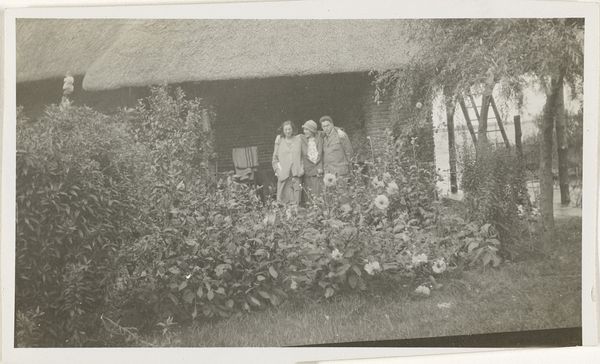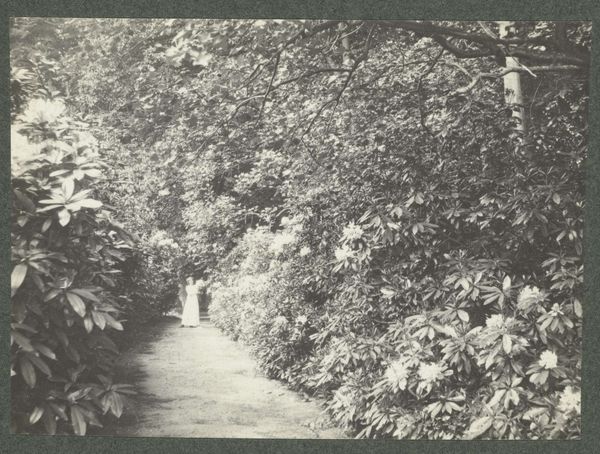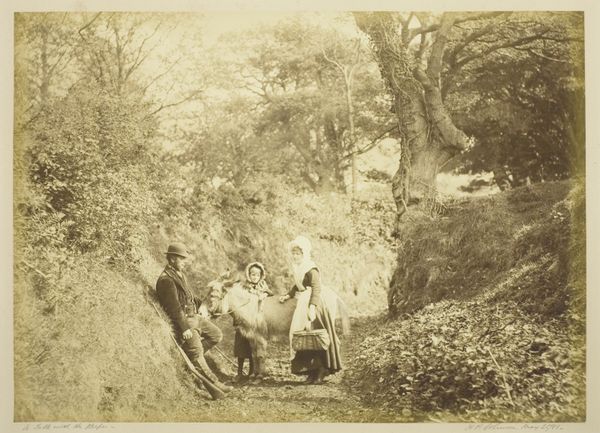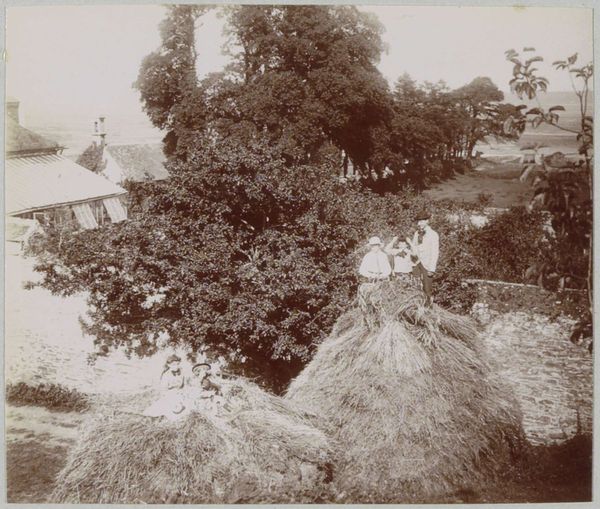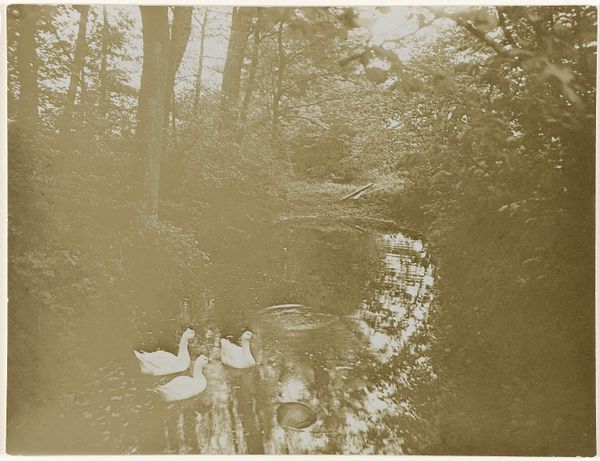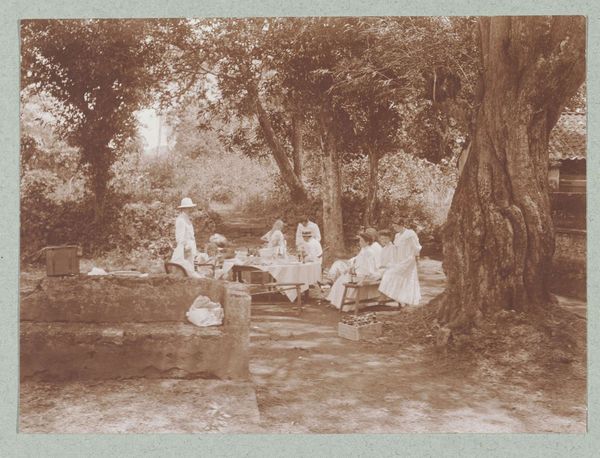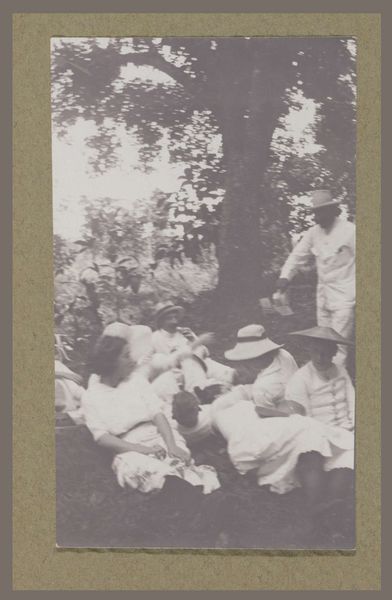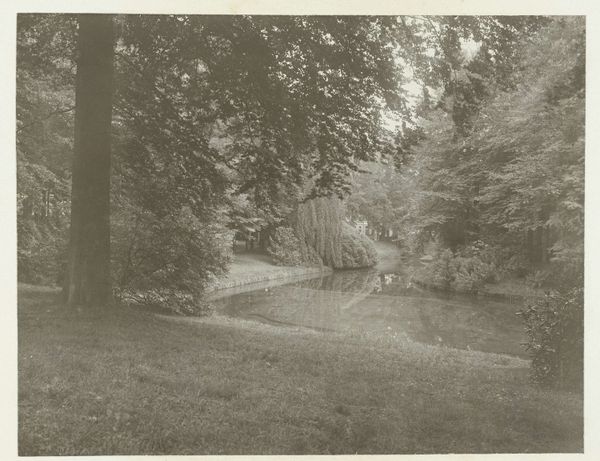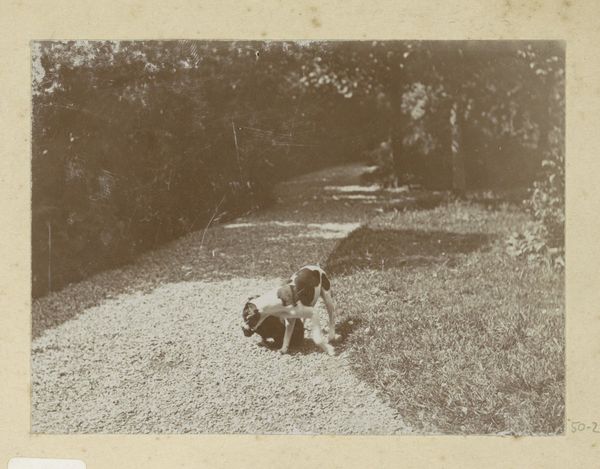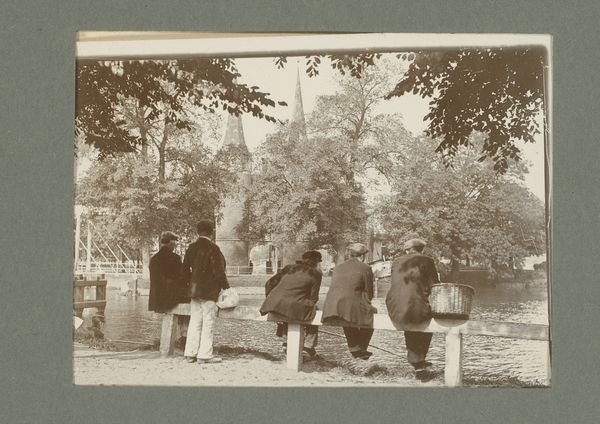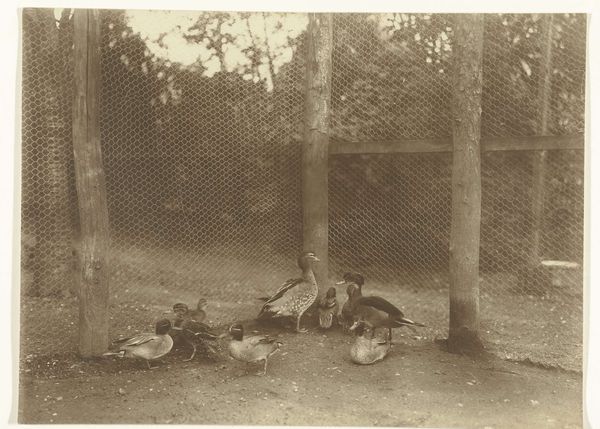
Dimensions: height 73 mm, width 98 mm, height 198 mm, width 263 mm
Copyright: Rijks Museum: Open Domain
Curator: It’s a strikingly theatrical composition, wouldn’t you agree? Editor: Absolutely, a hushed anticipation permeates it. Like they are awaiting an important visitor, and have been waiting a while given their position amid this very mature foliage. Curator: This photograph, taken by Geldolph Adriaan Kessler around 1913, is entitled “Vijf vrouwen op een rij achter een heg” or "Five women in a row behind a hedge". It's currently held at the Rijksmuseum. Look at the process of pictorialism used in it! It feels dreamlike. Editor: Yes, the dreaminess comes through. You notice the rich tones achievable with photography as medium—I'd guess gelatin silver? But, I'm fascinated by the hedge itself. The intense labour involved in cultivating such precisely trimmed greenery speaks volumes about social class at the time. Access to such meticulously maintained private gardens signifies substantial wealth and leisure, particularly in a rapidly industrialising society. Who tended to the cultivation of those gardens, for example? Curator: That's a fair point, a visible manifestation of class distinction! Kessler, however, seems interested in staging an encounter with impressionistic light amid constructed formality. Look how their poses both conform to and disrupt portraiture conventions, gesturing to shifts in female identity and representation around the turn of the century. There’s definitely tension there! Editor: It does make me think about how spaces like gardens reflected the constructed identities that people projected onto themselves during a certain era. This notion is enforced by the framing, I believe; Kessler, too, is curating this view to influence how it could or would be read by audiences viewing this very photo. Curator: You're making me think about how art academies fostered or stifled photographic artistry at this time. Editor: Precisely, it is not a matter of spontaneous expression. Rather it makes one question the modes of production by Kessler himself, but also what kind of patronage networks would exist to support works like this. Curator: What do you take away from this picture now, in our current moment? Editor: Beyond the historical contexts we explored, it underscores for me the ongoing human need to shape our environment – whether sculpting landscapes or crafting photographic narratives - and how these acts always involve complex social dynamics. What about you? Curator: It reaffirms the value of interrogating accepted ideas and images, understanding that history is constantly being reframed and re-understood. And it prompts a certain wonder for these five unnamed subjects standing silently, preserved in time.
Comments
No comments
Be the first to comment and join the conversation on the ultimate creative platform.
